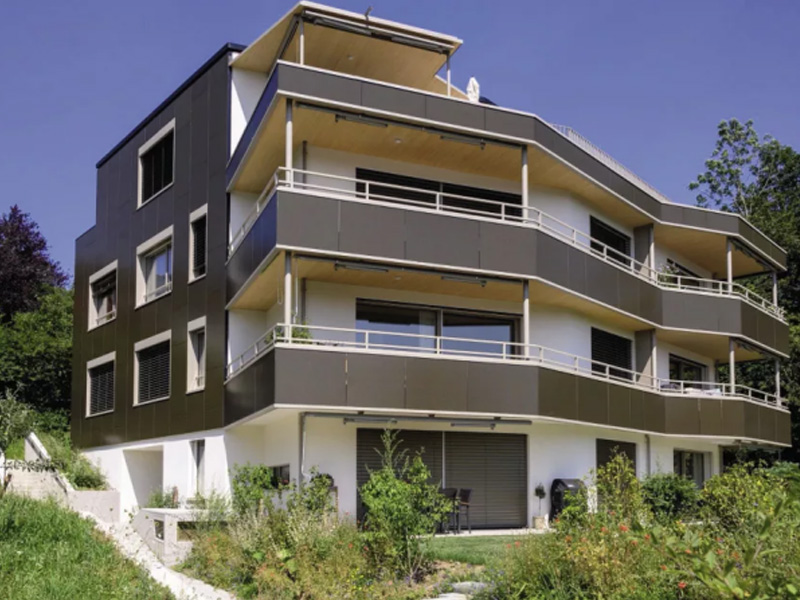Building-integrated PV has been described as a place where uncompetitive PV products are trying to reach the market. But that may not be fair, says Björn Rau, a technical manager and deputy director of PVcomB at
Helmholtz-Zentrum in Berlin, who believes the missing link in BIPV deployment lies at the intersection of the building community, the construction industry, and PV manufacturers.
From PV Magazine
The rapid growth of PV over the past decade has reached a global market of about 100 GWp installed per year, which means that about 350 to 400 million solar modules are produced and sold each year. However, integrating them into buildings is still a niche market. According to a recent report from the EU Horizon 2020 research project PVSITES, only about 2 percent of installed PV capacity was integrated into building skins in 2016. This minuscule figure is particularly striking when considering that more than 70 percent of energy is consumed. All of the CO2 produced worldwide is consumed in cities, and approximately 40 to 50 percent of all greenhouse gas emissions come from urban areas.
To address this greenhouse gas challenge and to promote on-site power generation, the European Parliament and Council introduced 2010 Directive 2010/31 / EU on the energy performance of buildings, conceived as ”Near Zero Energy Buildings (NZEB)”. The directive applies to all new buildings to be built after 2021. For new buildings that are to house public institutions, the directive entered into force at the beginning of this year.
No specific measures are specified to achieve NZEB status. Building owners can consider aspects of energy efficiency such as insulation, heat recovery, and power-saving concepts. However, since the overall energy balance of a building is the regulatory objective, active electrical energy production in or around the building is essential to meet NZEB standards.
Potential and challenges
There is no doubt that PV implementation will play an important role in the design of future buildings or the retrofitting of existing building infrastructure. the NZEB standard will be a driving force in achieving this goal, but not alone. Building Integrated Photovoltaics (BIPV) can be used to activate existing areas or surfaces to produce electricity. Thus, no additional space is needed to bring more PV into urban areas. The potential for clean electricity generated by integrated PV is enormous. As the Becquerel Institute found in 2016, the potential share of BIPV generation in total electricity demand is more than 30 percent in Germany and for more southern countries (e.g. Italy) even around 40 percent.
But why do BIPV solutions still play only a marginal role in the solar business? Why have they rarely been considered in construction projects so far?
To answer these questions, the German Helmholtz-Zentrum Research Center Berlin (HZB) conducted a demand analysis last year by organizing a workshop and communicating with stakeholders from all areas of BIPV. The results showed that there is not a lack of technology per se.
At the HZB workshop, many people from the construction industry, who are executing new construction or renovation projects, admitted that there are knowledge gaps regarding the potential of BIPV and the supporting technologies. Most architects, planners, and building owners simply do not have enough information to integrate PV technology into their projects. As a result, there are many reservations about BIPV, such as the alluring design, high cost, and prohibitive complexity. To overcome these apparent misconceptions, the needs of architects and building owners must be at the forefront, and an understanding of how these stakeholders view BIPV must be a priority.
A Change of Mindset
BIPV differs in many ways from conventional rooftop solar systems, which require neither versatility nor consideration of aesthetic aspects. If products are developed for integration into building elements, manufacturers need to reconsider. Architects, builders, and building occupants initially expect conventional functionality in the building skin. From their point of view, power generation is an additional property. In addition to this, developers of multifunctional BIPV elements had to consider the following aspects.
- Developing cost-effective customized solutions for solar-active building elements with variable size, shape, color, and transparency.
- Development of standards and attractive prices (ideally for established planning tools, such as Building Information Modeling (BIM).
- Integration of photovoltaic elements into novel façade elements through a combination of building materials and energy-generating elements.
- High resilience against temporary (local) shadows.
- Long-term stability and degradation of long-term stability and power output, as well as long-term stability and degradation of appearance (e.g. color stability).
- Development of monitoring and maintenance concepts to adapt to site-specific conditions (consideration of installation height, replacement of defective modules or façade elements).
- and compliance with legal requirements such as safety (including fire protection), building codes, energy codes, etc.、
Post time: Dec-09-2022

